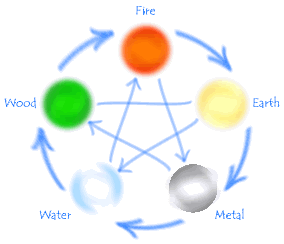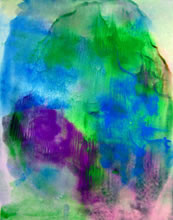Five Element acupressure seeks to discover the source of an individual’s imbalance at a spiritual or emotional level. Clients who receive this work engage in a process of returning to their true nature. The process allows them to move forward, creating a life in harmony with their nature. Individuals usually come to the work with a set of presenting symptoms. Relief from the symptoms becomes a by-product of the larger goal.
Understanding that we are an integral part of the natural world is at the core of Five Element acupressure. In Chinese medicine, the body is regarded as a microcosm of the universe. Just as there are daily and seasonal cycles in nature, there are cycles of change in the body.
Five Element theory concerns the process of transformation from one phase of a cycle into another. The word “Element” is actually misleading, since it suggests something fixed and unchanging. “Five Phases” would be a better translation of the Chinese term, but the name Five Elements has become standard.
The theory behind Five Element acupressure is based on a set of observations, correspondences, and relationships. I think of the theory as a metaphor that accomplishes two things.
| The Creative and Controlling Cycles Five Element theory concerns the process of transformation from one phase of a cycle into another. |  |
First, it simplifies complexity by organizing the world into categories. The five categories are named after basic elements found in Nature: Wood, Fire, Earth, Metal, and Water. Observations of Nature, including human beings, led the ancient Chinese to associate each Element with an extensive set of correspondences. For example, Wood is associated with spring, the color green, the emotion of anger, and the functions in the body governed by the Liver system. Water is associated with winter, the color black, the emotion of fear, and the Kidney system.
Second, and most importantly, the metaphor captures the dynamic of constant change. The Elements interact with each other in beneficial and destructive ways. Understanding the patterns of interaction and identifying cause and effect allow us to restore harmony when the world, including the human body, is out of balance.
Although the application of the theory can become quite complex, the basic theory itself is relatively simple and straightforward. There are two basic cycles: the nourishing or Creative cycle and the Controlling or destructive cycle.
In the Creative cycle, Wood nourishes Fire, which nourishes Earth, which nourishes Metal, which nourishes Water, which nourishes Wood.
In the Controlling cycle, Fire destroys Metal, which destroys Wood, which destroys Earth, which destroys Water, which destroys Fire.
At any given moment, the proportion of the Five Elements in our system determines our physical and mental states. When one element grows out of proportion, we experience mental disharmonies (anger, grief, excessive joy, fear, worry), as well as physical complaints that correspond to one of the five organ systems.
A Five Element practitioner attempts to identify which Elements are imbalanced and to locate blocks in the natural flow of nourishment from one Element into the next. For example, when symptoms indicate that the Wood element is damaged, strengthening the Water element will help nourish and replenish Wood.
Identifying the source of disharmony can be as complex as solving any mystery. Once the body goes out of balance, the Elements continuously interact with each other over time, creating layers of imbalance. Restoring harmony initially involves addressing current symptoms, which in turn allows the underlying imbalances to reveal themselves. The process is like peeling the skin from an onion.
The current physical and emotional symptoms are important clues
to the mystery, but the purpose in treating them is to identify the original, underlying causes of disharmony. The ultimate objective is to effect a permanent change, one that brings a state of true health and vitality.

